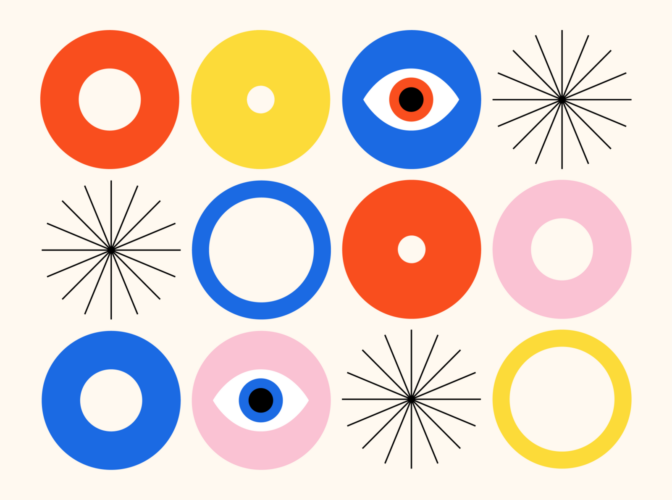Improve your design eye with the help of 5 expert tips. Learn how to identify what makes a good design and why.

Renee Fleck
Written by Renee Fleck
Published on
Last updated
You can’t become an effective designer in a vacuum. To develop your design skills, it’s vital that you develop an eye for design. If you can look at a design and identify why it works (or doesn’t), you’ll be much better equipped to incorporate those insights into your work.
An eye for design can also help spark new ideas for your work. Figuring out what works and what doesn’t will allow you to determine what does and doesn’t work when you’re designing your own projects. It’s an important skill that’s worth taking the time to hone. So, if you’re looking to boost your design skills in 2022, here are five ways to help you develop your eye for design.

1. Look for inspiration outside of your niche
When designing a website, it makes sense to look at other websites for inspiration, right? It does. But it also makes sense to look for inspiration elsewhere.
Looking at designs outside of your niche challenges you to appreciate design based on the core principles of what makes a design “good.”
For example, you might look to magazines for layout inspiration or paintings for color palette ideas. Look at the shape of furniture or the way different textures interact with one another for ideas on how to layer elements together effectively.
Looking at designs outside of your niche challenges you to appreciate design based on the core principles of what makes a design “good” without the usual preconceptions you have about how a design should look.

2. Study the principles of design
The principles of design were defined in the late 19th century and became more commonly put into practice in the mid 20th century. While it’s entirely possible to create good designs without consciously knowing the principles of design, you’ll find that those good designs generally follow the principles anyway.
The principles of design tap into behavioral psychology of users to influence the way they interact with your design. They can influence what users perceive to be most important, which elements they interact with first, and even how likely they are to make a purchase.
While mastering the principles of design takes time and practice, you can learn the basic ideas behind them rather quickly. Once you know the principles, start studying how they’re used in all types of design.

3. Break down other designs
One of the best ways to develop your eye for design is to spend time breaking down the designs of others. Next time you see a website you love, for example, take a few minutes to analyze what about it works so well for you. Is it the color palette? The interaction design? The typography? Dive into the CSS to get specifics on how these elements relate to one another.
“Seek out designs created by professionals at the top of their field. What do they do differently than the average creative?”
The same goes for designs you hate. Why do you hate them? What about them doesn’t work? Is there some actual flaw (poor typography, a clashing color palette, etc.), or is it simply a matter of taste? Figuring out why you like or dislike a design is vital to developing your taste and style.
Seek out designs created by professionals at the top of their field. What do they do differently than the average creative? What about their designs sets them apart from all the others? If you can, compare their early work to the work they created after getting more experience. Analyze what changed and how their work improved.

4. Pay attention to the details
What’s the difference between a design that’s good and one that’s great? The devil is in the details.
When you look at the work of other designers, pay attention to the details of their designs. Something as simple as a rounded corner here or a slightly larger font there can have a huge impact on how polished a design looks.
If you want to really hone your eye for design, make sure you’re paying attention to the details of designs you encounter and not just the overall appearance. Those details are what can truly make a design sing.

5. Observe everything around you through a design lens
The world is filled with designs, both intentional and otherwise. Start paying attention to all of it. Next time you’re running errands, look at the designs of packages, signage, and everything else you encounter with a critical eye. See if you can discern why things are designed the way they are.
Pat attention to things that aren’t “designed” as well, particularly things in nature. Looking at the way a leaf is shaped, the pattern that raindrops form, or the shape of a snowflake can all be ways to hone your eye to view the world around you through a design lens.
Bonus Tip: Practice what you observe
Having an amazing eye is useless for designers unless you put what you observe into practice. By practicing the things you observe, you can further understand how and why they work, which improves your overall eye.
Even exercises like recreating an entire design without looking at the CSS or other code can be a valuable way to understand how a design is composed and what makes it work. Understanding the mechanics of design will develop your eye for design better than simply observing. And that understanding will lead you to become a better designer.
Written by Renee Fleck
Published on
Last updated







